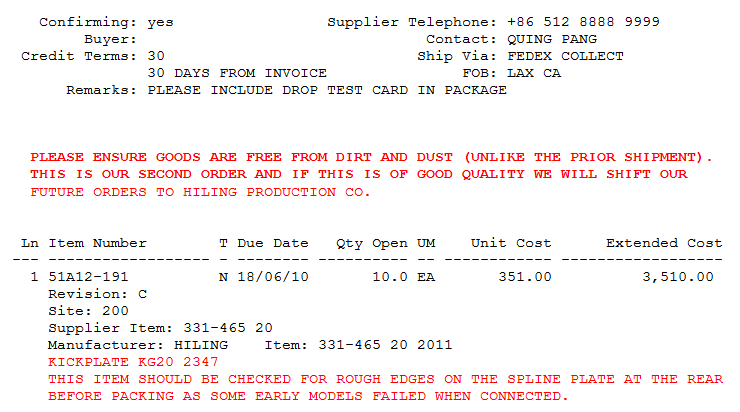Rules and Area Evaluation Order (how to use them, how to distinguish between different printlines)
Rules define Areas, Areas are evaluated in user defined sequence. The rule-of-thumb for area evaluation is:
| Master | from Page 1, defaults to first |
| Totals | from last page of document |
| Unwanted subsequent header | from Page 2 header, include detail header |
| Unwanted detail header | from Page 1, unless there are no Header Comments, in which case define the first page header to include the detail header lines |
| Other unwanted lines | continued, carried forward, underlines etc. |
| Detail lines | from most specific to least specific |
| Header comments | from Page 1 |
Select the Area, Evaluation order tool ![]() to change the order of
evaluation. "Loose" rules with no fixed constants should be
evaluated lower than fixed rules. Select an evaluation order to
pick up difficult situations, such as below:
to change the order of
evaluation. "Loose" rules with no fixed constants should be
evaluated lower than fixed rules. Select an evaluation order to
pick up difficult situations, such as below:
Consider these (red) lines from a QAD PO, they are to all intents and purposes identical in that their data is unstructured, meaning the only rules you can apply are "empty" and "not empty" - there are no "fixed" literals at all.

The first three are Master Comments (zero to many lines), the "KICKPLATE" line is a Product Description of one line only, always present as the final line of a product, and the last two are Product Comments (zero to many lines).
This is how they are detected and resolved:
- Product Description:
- This is resolved by being an area in Product, following the fixed Product record and the four optional areas (Revision, Site, Supplier and Manufacturer). Evaluate this prior to the Product Comment, and recognize based on description not empty.
- Product Comment is recognized by being a record evaluated after Product Description, empty in the starting five columns and not empty in the following columns. These are the rules for Product Comment:
-

- Master Comments are the last evaluated (ie after Product Comment) and have these as rules, where the second rule segregates these from the earlier evaluated Product Comments:
-




